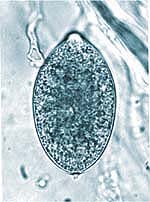All Issues
Sudden oak death genome mapped
Publication Information
California Agriculture 58(3):133-133.
Published July 01, 2004
PDF | Citation | Permissions
Full text
The entire DNA blueprint for Phytophtora ramorum — the pathogen that causes sudden oak death — has been sequenced, scientists with the Joint Genome Institute (JGI) announced in June. The nonprofit institute is operated by UC for the U.S. Department of Energy.
Mature oak trees began mysteriously dying from sudden oak death in the mid-1990s; UC scientists identified and diagnosed P. ramorum as the culprit in 2000. JGI scientists, who collaborated with the Virginia Bioinformatics Institute, announced that P. ramorum has 16,000 genes and 60 million chemical DNA units (base pairs). (Humans have 25,000 to 30,000 genes and 2.9 billion base pairs.)
Concurrently, JGI announced the sequencing of Phythophthora sojae, which causes root rot in soybeans. The genome sequences are expected to help scientists develop rapid detection systems and methods to control the spread of sudden oak death, which has killed tens of thousands of trees, and the soybean disease, which causes an estimated $1 billion in crop losses annually.
As of June, P. ramorum had been found in 13 California counties and southern Oregon, as well as 125 nurseries in 17 states nationwide. In April, wood rose (Rosa gymnocarpa), a native California flower commonly found in a variety of habitats and a popular ornamental, was added to the list of about 30 regulated P. ramorum host plants.





